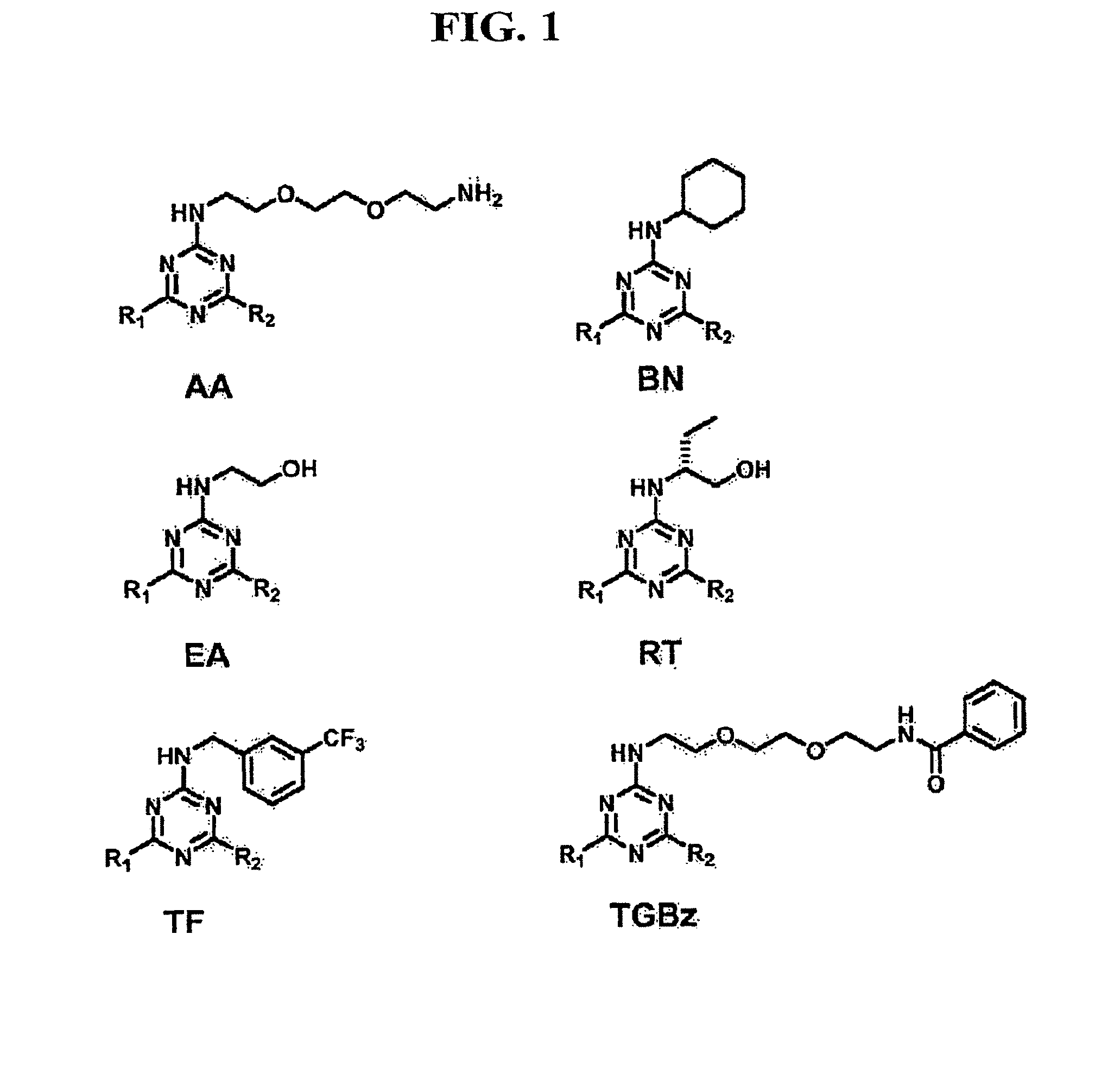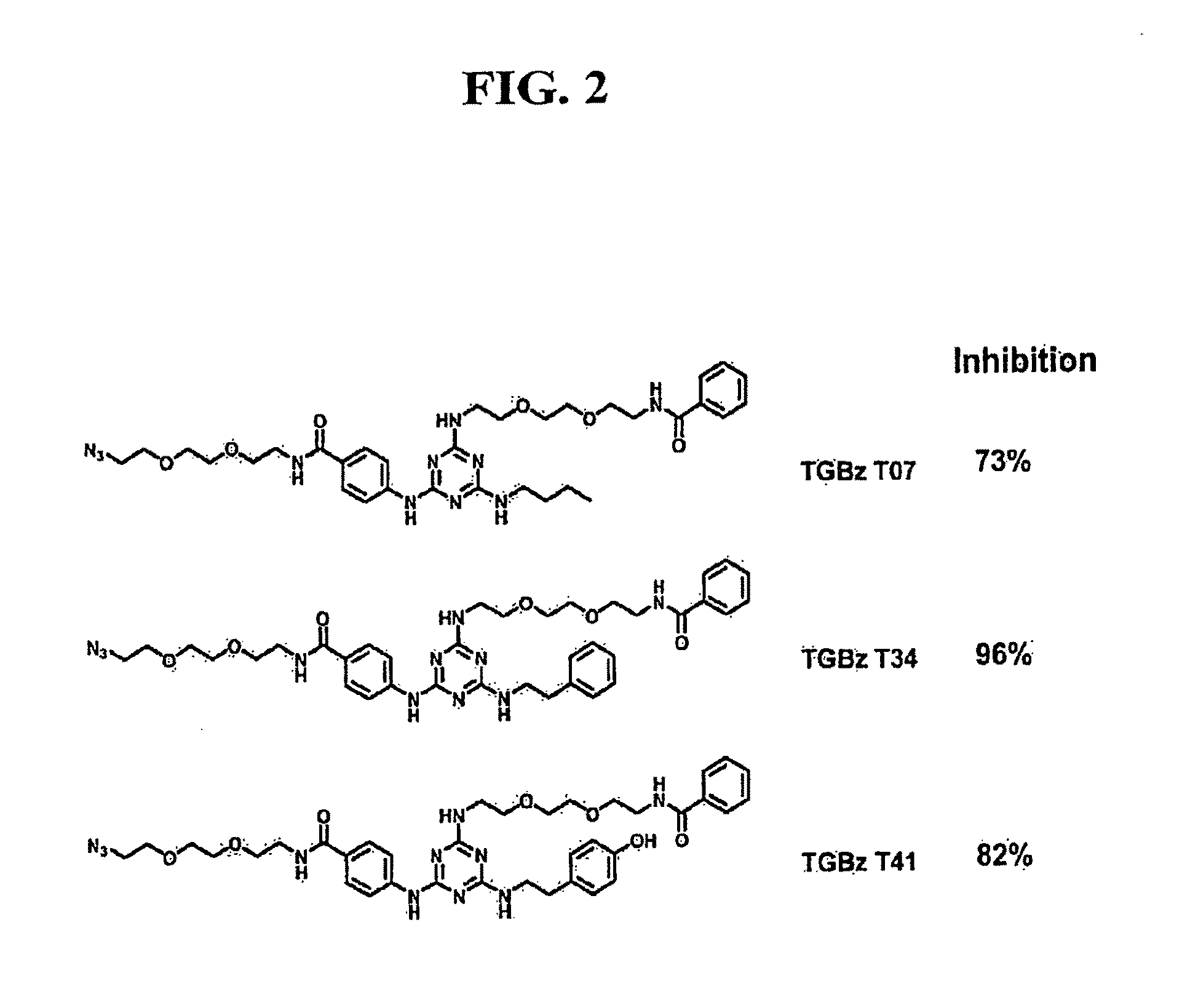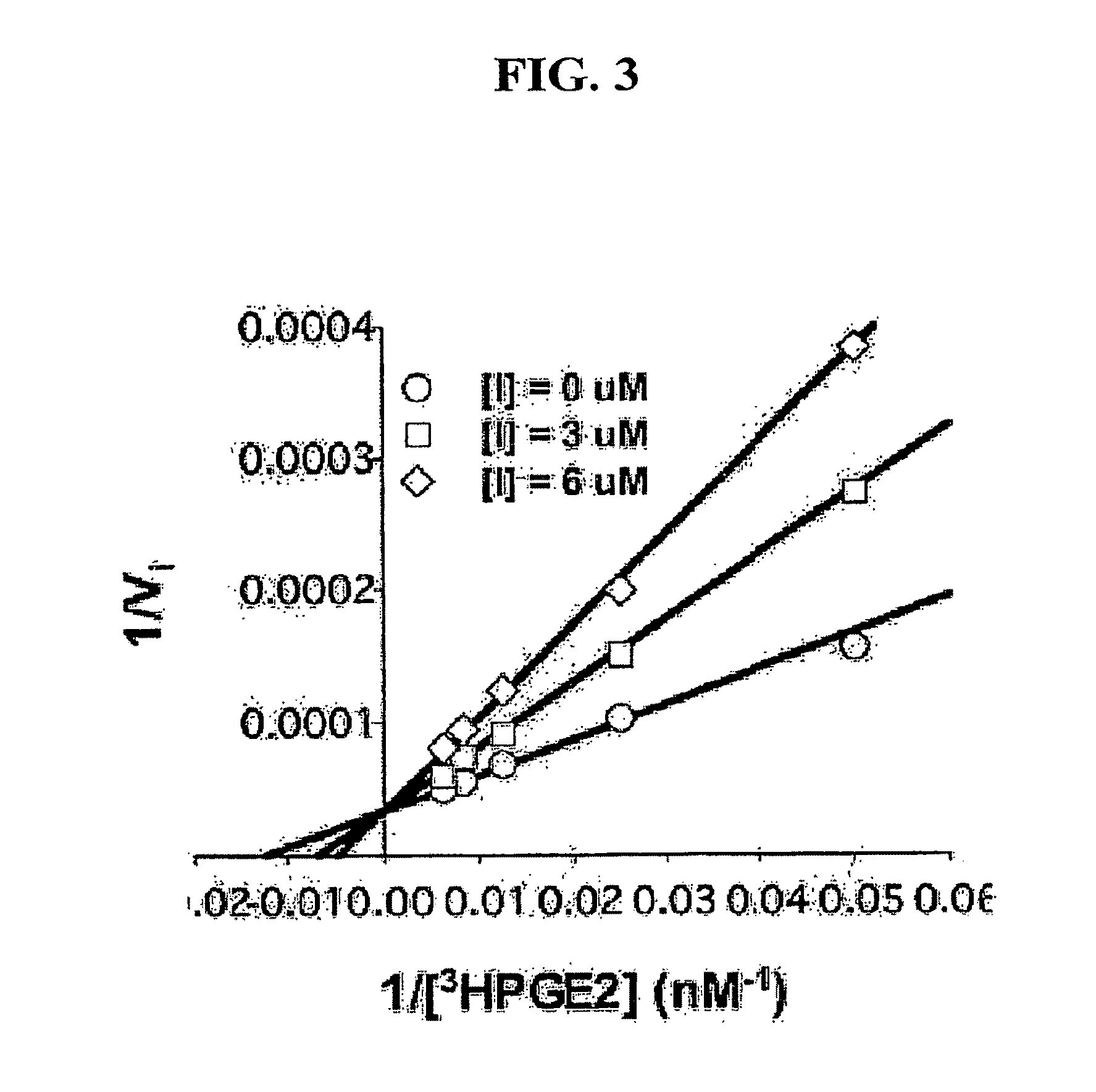Prostaglandin transporter inhibitors
a technology of prostaglandin transporter and inhibitor, which is applied in the field of prostaglandin transport, can solve problems such as specificity, and achieve the effect of inhibiting the activity of the mammalian prostaglandin transporter (pgt)
- Summary
- Abstract
- Description
- Claims
- Application Information
AI Technical Summary
Benefits of technology
Problems solved by technology
Method used
Image
Examples
example 1
Identification of a New Class of PGT Inhibitors and Characterization or Their Biological Effects on PGE2 Transport
example summary
[0139]Prostaglandins (PGs) are involved in several major signaling pathways. Their effects are terminated when they are transported across cell membranes and oxidized intracellularly. The transport step of PG metabolism is carried out by the prostaglandin transporter (PGT). Inhibition of PGT would therefore be expected to change local or circulating concentrations of prostaglandins, and thus their biological effects. To develop PGT-specific inhibitors with high-affinity, a library of triazine compounds was designed, and 1,842 small molecules were screened by using MDCK cells stably expressing rat PGT. Several effective PGT inhibitors were found. Among them, the most potent inhibitor was TGBz T34, with a Ki of 3.7±0.2 μM. These inhibitors allowed the isolation of the efflux process of PGE2 and the demonstration that PGT does not transport PGE2 outwardly under physiological conditions.
Introduction
[0140]Prostaglandins (PGs) are local signaling molecules that trigger pain, fever, and in...
example 2
Additional PGT Inhibitors and Effect of PGT Inhibition on COX-2 Activity
[0161]Structurally agnostic screening was carried out with ˜2,000 organic small molecules that were modified from lead compounds T34 and T41, described in Example 1. The most effective, compound TGBZ T26A, competitively inhibits PGT at a Ki=300 nM.
[0162]Table 2 provides the PGT inhibitors from this screening that showed greater than 50% inhibition at 5 μl.
[0163]
TABLE 2% Inhib.KiCodeStructureat 5 μM(μM)T34 843.7T41 656.2T26A920.38T28A843.6T25A823.9T18A76T07A74T22A72T21A72T08A64T14A56T03A54
[0164]Data is provided below that shows that a PGT inhibitor down-regulates PG receptor cell surface expression which, in turn, down-regulates Cox-2, the enzyme synthesizing those PGs that mediate fever, pain, and inflammation.
[0165]The inventors have formulated a model for PGT regulation of PGE2 receptor (EP) expression. A diagram of the model is provided as FIG. 8. In that model, PGT regulates peri-cellular prostaglandin E2 [P...
PUM
| Property | Measurement | Unit |
|---|---|---|
| total volume | aaaaa | aaaaa |
| Quantitative (Real Time | aaaaa | aaaaa |
| Quantitative (Real Time | aaaaa | aaaaa |
Abstract
Description
Claims
Application Information
 Login to View More
Login to View More - R&D
- Intellectual Property
- Life Sciences
- Materials
- Tech Scout
- Unparalleled Data Quality
- Higher Quality Content
- 60% Fewer Hallucinations
Browse by: Latest US Patents, China's latest patents, Technical Efficacy Thesaurus, Application Domain, Technology Topic, Popular Technical Reports.
© 2025 PatSnap. All rights reserved.Legal|Privacy policy|Modern Slavery Act Transparency Statement|Sitemap|About US| Contact US: help@patsnap.com



